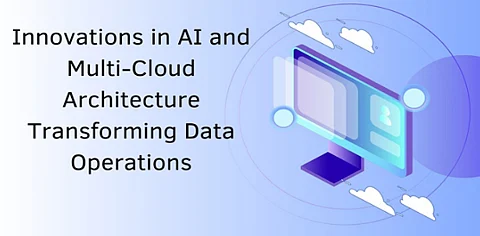

In this digital era, integrating artificial intelligence (AI) and machine learning (ML) with cloud computing has redefined data processing and analytics. Among the trailblazers in this transformation is Jaya Krishna Vemuri, whose expertise in enterprise cloud solutions has contributed to groundbreaking advancements in data management. His insights into AI-driven architectures and multi-cloud innovations offer a forward-thinking perspective on the evolution of data operations.
Machine learning has become a cornerstone of modern data-driven enterprises, and Snowpark introduces a paradigm shift in optimizing ML workflows. Snowpark’s Python DataFrame operations execute significantly faster than traditional connectors, leveraging vectorized operations and intelligent query planning to reduce memory usage. This efficiency allows data scientists to seamlessly integrate their models into distributed cloud environments, accelerating the adoption of AI-driven decision-making.
Interoperability is crucial in today’s AI ecosystem, and integrating ML with external platforms has become a game-changer. By enabling deep learning models to train on distributed architectures, enterprises achieve significant speed improvements. These integrations ensure real-time data processing while maintaining high accuracy levels in applications such as computer vision and natural language processing. The ability to scale machine learning workloads across multiple nodes enhances the efficiency and reliability of AI applications.
AutoML revolutionizes AI model development by automating complex processes such as hyperparameter tuning, feature selection, and model training, reducing the time and expertise required to build effective machine learning models. By optimizing parameters automatically, AutoML ensures faster convergence, leading to improved accuracy and efficiency. This capability is particularly valuable for organizations handling large-scale structured and unstructured data, enabling seamless AI deployment across industries such as healthcare, finance, and retail. AutoML also democratizes AI by eliminating the need for extensive data science expertise, allowing businesses to leverage machine learning for decision-making without deep technical knowledge. With its scalability and adaptability, AutoML empowers enterprises to accelerate AI adoption, enhance predictive analytics, and drive data-driven innovations with minimal manual intervention.
As organizations adopt multi-cloud strategies, ensuring seamless operations across various cloud providers has become paramount. The latest advancements in multi-cloud architecture allow for consistent workload distribution, minimizing latency and optimizing resource allocation. Enterprises benefit from a cloud-agnostic approach, which enhances flexibility, mitigates vendor lock-in, and ensures high availability across diverse cloud environments.
One of the key challenges in multi-cloud operations is efficient data sharing. Innovations in cross-cloud architectures have significantly reduced data movement costs and improved synchronization between cloud environments. Intelligent data replication mechanisms ensure real-time consistency while maintaining security and compliance standards. Enterprises utilizing these solutions report enhanced efficiency and reduced operational overhead in managing distributed data.
Security remains a critical aspect of cloud adoption, and advancements in zero-trust architectures have bolstered protection against cyber threats. Automated threat detection systems, real-time compliance monitoring, and quantum-resistant encryption protocols provide enterprises with a robust security framework. Organizations implementing these measures experience a significant reduction in unauthorized access attempts and enhanced governance over sensitive data.
Optimizing cloud performance is essential for enterprises managing large-scale data operations. Intelligent workload placement, automated resource allocation, and caching mechanisms significantly reduce latency and enhance computational efficiency. By adopting these performance optimization strategies, organizations achieve faster query response times and improved resource utilization, ensuring seamless data processing even during peak workloads.
Artificial Intelligence and multi-cloud technologies have all possibilities to revolutionize the digital space in terms of efficiency, security, and scalability. Edge computing, with its premise being real-time data processing close to the source, will lower latency and enhance responsiveness to be used in the most critical applications. The everlasting AI-powered approach in a non-invasive manner to operationalize energy-saving peaks of computation with sustainable-hope computing will manage power consumption and high-performance benchmarks. Automated orchestration by the cloud will manage resource allocations and ensure that workloads are optimally spread across various cloud environments. AI-driven security frameworks, meanwhile, would perform real-time threat scoring to discern and manage out cyber risk issues. Plus, federated learning will ensure greater privacy and compliance for businesses integrating AI solutions, considering an AI-driven future that will enhance seamless collaboration, innovation, and transform digital interoperability for varied sectors.
Jaya Krishna Vemuri, through his findings, has positively endorsed AI in the life of some industries alongside the potential of some other ways that might really help revolutionize our very own life over potential lines. For an enterprise activity, the integration of AI-driven and multi-cloud architectures might grow that full paycheck when focusing on intelligent automation, cross-cloud interoperability, and further enhanced security frameworks. The sheer future of digital operations naturally involves always learning to adapt with more technologies to guide business success.
